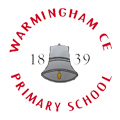We Are Learning About ...
A Caring Christian Family Where We Grow Together
Let Your Light Shine ~ Matthew 5:16
Our study theme this half term is Crime and Punishment, inspired by The Lost Happy Endings by Carol Ann Duffy and Jane Ray. We began with a powerful visit to Shrewsbury Prison, setting the scene for our learning journey.

As writers, we will be crafting traditional tales with a twist — focusing on characters who mistreat others and face the consequences of their actions. We will develop rich settings, vivid characters, and alternative endings that reflect justice and morality.
As readers, we will take part in year group reading sessions with a focus on fluency, comprehension and inference skills. This half term we will be using the book: Hansel & Gretel by Neil Gaiman.
As historians, we are exploring how crime and punishment has changed over time, from the Roman justice system to the Anglo-Saxon, Tudor, and Victorian eras. We’ll study the life of Dick Turpin and compare historical and modern approaches to crime prevention and justice.
As courageous advocates, we’ll reflect on what justice means today. Through real-life cases like Ruth Ellis and Derek Bentley, we’ll explore fairness in punishment and consider whether figures like Banksy, Robin Hood, and Dick Turpin were criminals or champions of change. We’ll also be researching figures like Greta Thunberg and Wangari Maathai and comparing their activism to historical advocates. We will create posters or speeches about standing up for environmental justice.
As artists, we’ll study graffiti as a form of street art, learning about its history and debating whether it’s art or vandalism. Inspired by Banksy and Keith Haring, we’ll create our own name tags and expressive designs. We’ll also design poppy-themed inspiration boards, using a range of materials to create 2D and 3D artwork that reflects remembrance and creativity.
As designers, we’ll explore how to build strong, stable structures using different materials and techniques. We will plan, build, test, and evaluate their own 3D frameworks, learning how design impacts everyday life.
As scientists, we’ll investigate materials and their properties, learning how mixtures can be separated and how some changes can be reversed. We’ll end the unit with a CSI investigation, applying our knowledge to solve a mystery using scientific methods.
Other Curriculum Highlights
As mathematicians, we will be developing our multiplication and division skills before we move onto fractions.
As theologians, we’ll create a safe space to explore big questions about loss, death, and what different faiths believe about life after death. We’ll also explore how Christians around the world celebrate Christmas, reflecting on the values of love, hope, and faith.
As musicians, we’ll explore samba music, developing rhythm, melody, and musical structure through improvisation and performance. We’ll also reflect on how music from different cultures can inspire and unite us.
As computer scientists, we’ll be coding with BBC Micro:bit kits, learning how to program lights, sensors, and buttons to solve problems and create interactive projects.
As sports people, we’ll bring street art to life through expressive dance, using movement to tell stories and explore emotion. In gymnastics, we’ll develop safe jumping techniques and create group sequences using apparatus, levels, and timing.
As international speakers, we’ll continue building our Spanish vocabulary, learning to name fruits and vegetables, express preferences, and take part in a market role-play using key phrases and accurate pronunciation.

